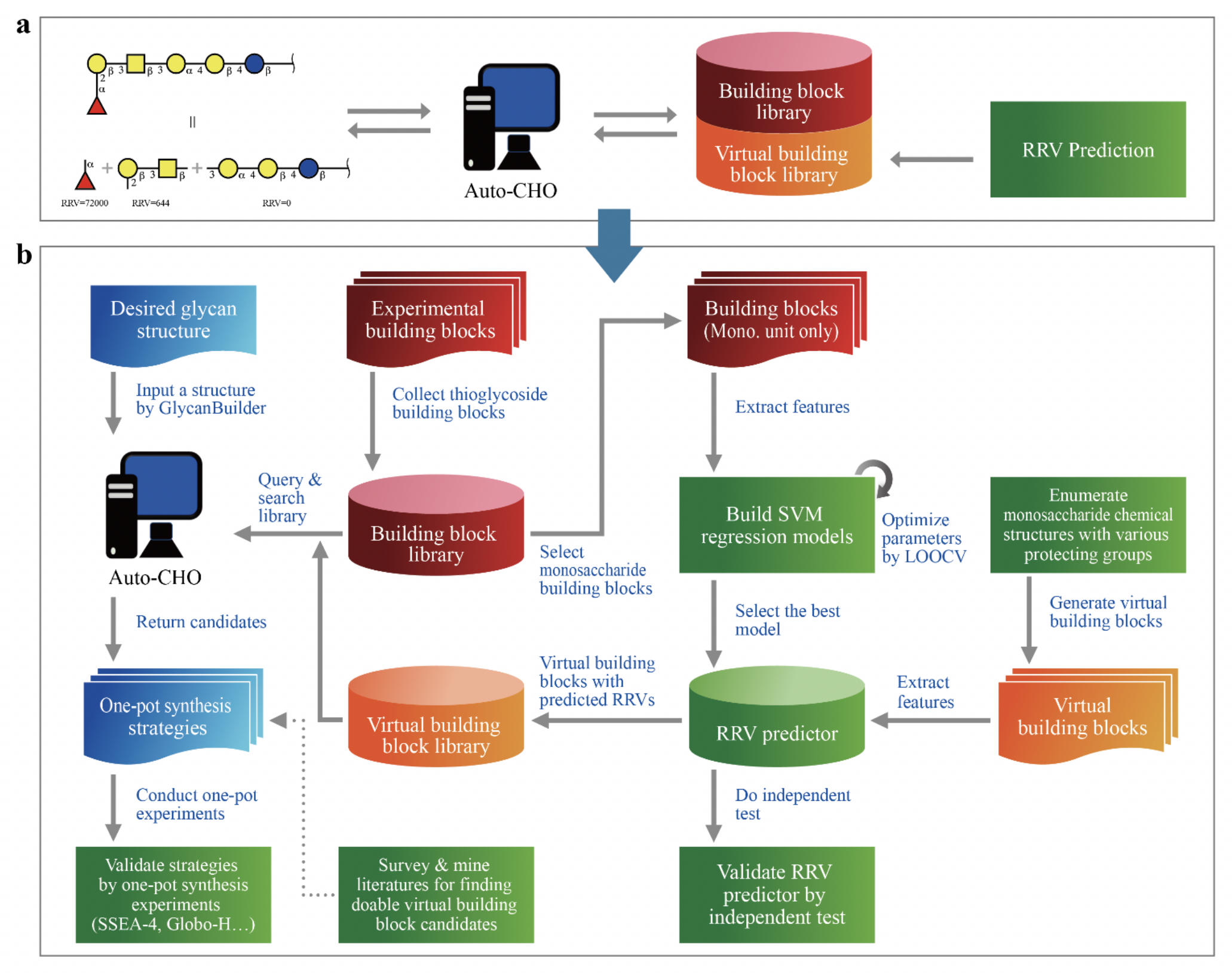One of the most important classes of biomolecules, oligosaccharides are involved in a variety of biochemical processes, including intercellular recognition, cell differentiation, cancer proliferation, inflammation and immune responses. In humans, carbohydrates often attached to glycoproteins and glycolipids, and are formed from about 9-10 monosaccharides through glycosidic linkage to generate an enormous structural diversity. For example, about 15 million tetra-saccharides could be formed from the 9 common monosaccharides. However, it is very difficult or even impossible to isolate any oligosaccharide as pure form from natural sources, and as a result “synthesis” has been utilized as a tool in order to furnish sufficient amounts of pure oligosaccharide samples for biological study. In an effort to improve upon the classical solution phase synthesis, which is a time-consuming task that often requires a special strategy for each molecule, scientists have been developing effective methods that can help speed up the pace of carbohydrate research by improving researchers’ access to synthetic glycans.
Among the high-speed methods developed for oligosaccharide synthesis, the automated solid phase synthesis, which was first reported on by Peter Seeberger in 2001 was performed successfully in a modified ABI peptide synthesizer with features adapted for carbohydrate chemistry, and thereafter it became clear that the process reduced the expenditure of time dramatically, and proved beyond useful in obtaining complex and biologically relevant carbohydrate structures. Today, the automated concept continues to be studied and improved upon. Another notable development was the first enzymatic one-pot method developed in 1982 by Wong and Whitesides for the large-scale synthesis of oligosaccharides and also the first programmable automated one-pot synthesis method developed by the Wong group in 1999.
The programmable one-pot method was designed to enable the rapid synthesis of a large number of oligosaccharides, using the software Optimer to search Building BLocks (BBLs) with defined relative reactivity values (RRVs) to be used sequentially in the one-pot reaction. However, (1) there were only about 50 BBLs with measured RRVs in the original library and (2) the method could only synthesize small oligosaccharides due to the RRV ordering requirement.
Now, the research team led by Dr. Chi-Huey Wong and Dr. Chung-Yi Wu of the Genomics Research Center and Dr. Wen-Lian Hsu of the Institute of Information Science at Academia Sinica successfully used artificial intelligence (AI) and algorithm to design a new software program called Auto-CHO to enable the selection of desired building blocks for the one-pot synthesis of oligosaccharides. This new technology will certainly facilitate the automation of glycan synthesis.
 |
| The Workflow of Auto-CHO Program: Programmable One-pot Oligosaccharide Synthesis. a, The basic concept of Auto-CHO. It allows users to input a desired glycan structure, and the program starts to search the building block library and returns with one-pot glycan synthesis options. b, The detailed work-flow shows how to construct the RRV predictor and how to build the virtual building block library with predicted RRVs |
In this research, the research team increases the library to include 154 validated BBLs and 50,000 virtual BBLs with predicted RRVs. The virtual library was built by applying the machine learning approach to build an RRV predictor trained by validated BBLs with feature engineering and optimized processes. The final predictor has outstanding performances based on cross-validation and independent test, and many of the virtual BBLs were further confirmed by experiment.
In addition, the research team has designed a new algorithm that supports hierarchical one-pot synthesis using fragments as BBLs generated by the one-pot synthesis. They also develop a new software Au-to-CHO, which is a free and open source GUI software that can be operated in Windows, macOS, or Ubuntu. This advanced programmable one-pot method provides potential synthetic solutions for numer-ous complex glycans. Furthermore, users can give feedback on the use of virtual BBLs through Au-to-CHO. The feedback can help the community to fine tune and improve the virtual building blocks and remove ineffective ones. Using the Auto-CHO program, four biologically important glycans were suc-cessfully synthesized as demonstrated in this research.
This paper entitled “Hierarchical and Programmable One-Pot Synthesis of Oligosaccharides” was pub-lished in Nature Communications on December 6, 2018. The first author, Mr. Cheng-Wei Cheng, was a Ph.D. student from Bioinformatics Program, Taiwan International Graduate Program, Academia Sinica. The full article can be accessed from the following website.
https://doi.org/10.1038/s41467-018-07618-8